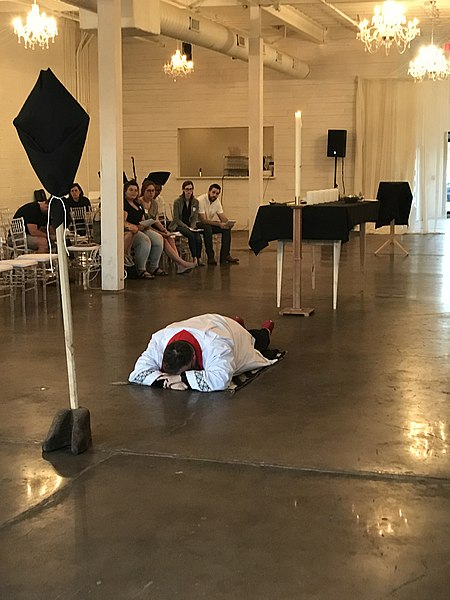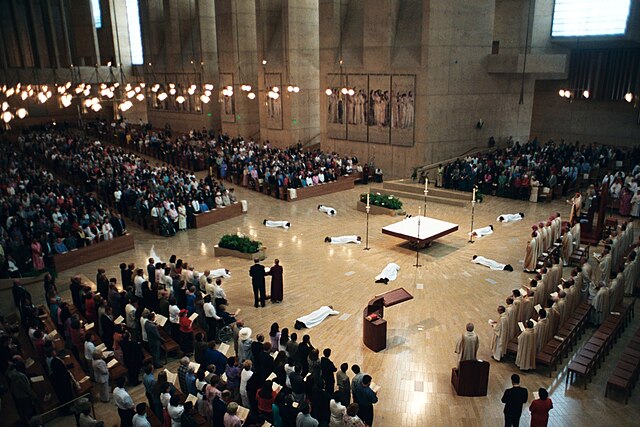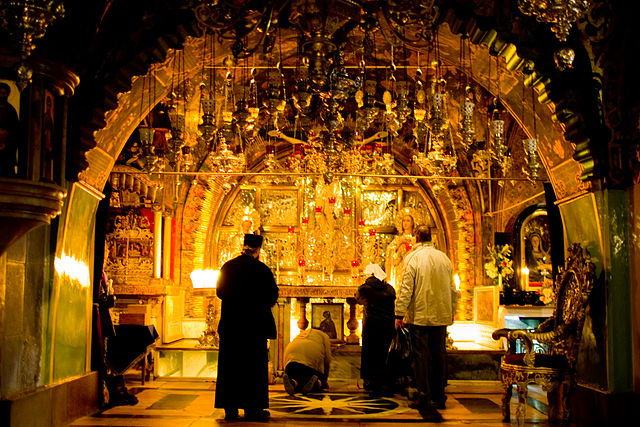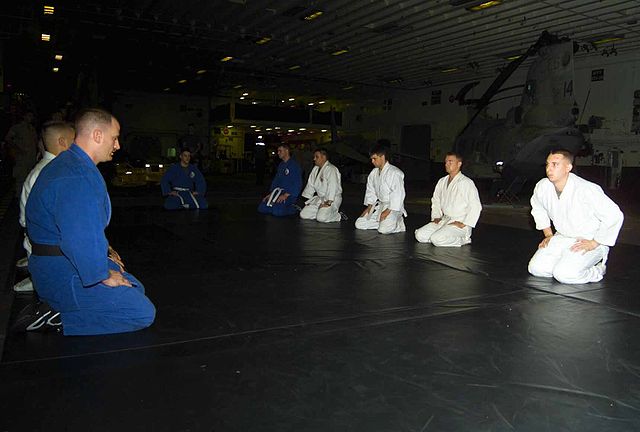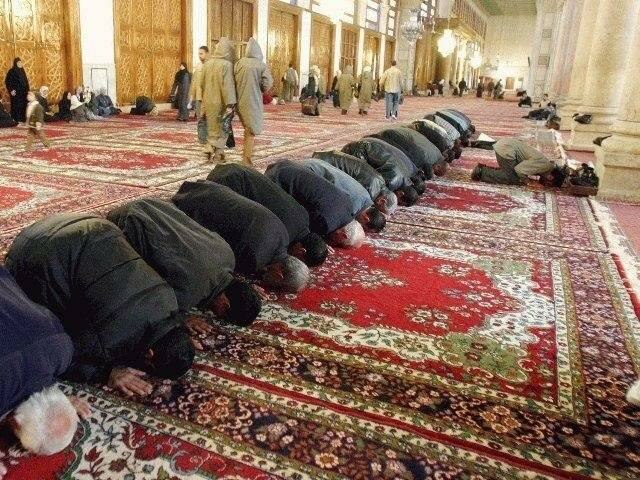Prostration is the gesture of placing one's body in a reverentially or submissively prone position. Typically prostration is distinguished from the lesser acts of bowing or kneeling by involving a part of the body above the knee, especially the hands, touching the ground.
During a Good Friday liturgy, a Christian clergyman prostrates himself in accordance with the rubrics in the Book of Worship. The processional cross is veiled in black, the liturgical colour associated with Good Friday in many Western Christian denominations.
Buddhist pilgrims prostrating at the Jokhang.
White-clad deacon candidates prostrate before the altar of the Cathedral of Our Lady of the Angels in Los Angeles during their ordination liturgy
Eastern Orthodox pilgrims making prostrations at Golgotha in the Church of the Holy Sepulchre, Jerusalem.
Bowing is the act of lowering the torso and head as a social gesture in direction to another person or symbol. It is most prominent in Asian cultures but it is also typical of nobility and aristocracy in many European countries. It is also used in religious contexts, as a form of worship or veneration. Sometimes the gesture may be limited to lowering the head such as in Indonesia, and in many cultures several degrees of the lowness of the bow are distinguished and regarded as appropriate for different circumstances. It is especially prominent in Nepal, Cambodia, Thailand, Laos, Vietnam, China, Korea, and Japan, where it may be executed standing or kneeling. Some bows are performed equally by two or more people while others are unequal – the person bowed to either does not bow in return or performs a less low bow in response. A nod of the head may be regarded as the minimal form of bow; forms of kneeling, genuflection, or prostration which involves the hands or whole body touching the ground, are the next levels of gesture.
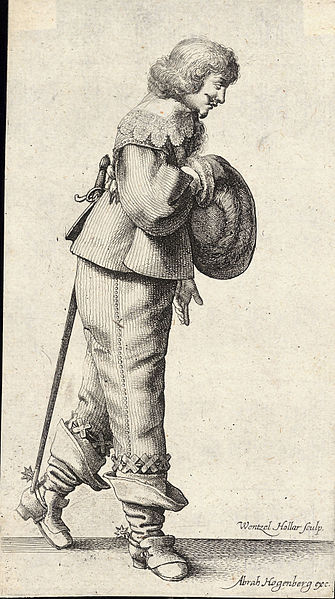
Man bowing
Steven Gerrard performing a wai
Judo practitioner (right) performs a bow while seated in seiza.
Muslim practitioners performing Sajdah or Sujud.

